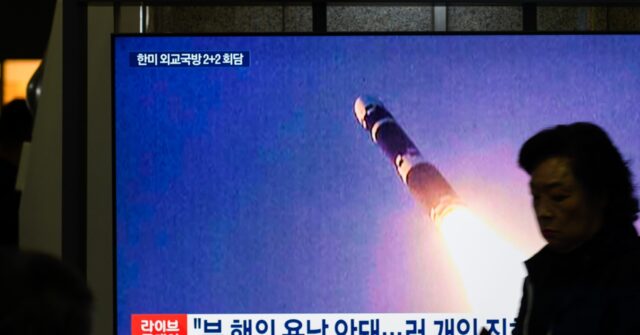On the eve of the U.S. presidential election, North Korea conducted a series of short-range ballistic missile launches into the Sea of Japan, an act that emphasizes the ongoing tensions in the region. The South Korean Joint Chiefs of Staff (JCS) reported that the missiles were launched from North Hwanghae province, close to the capital city of Sariwon, traveling approximately 250 miles before landing in the sea. Specific details regarding the number of missiles launched remain undisclosed; however, it was confirmed that multiple missiles were involved in this test firing. The JCS indicated that the missiles were likely launched using North Korea’s KN-25 multiple rocket launcher system, which is capable of reaching targets anywhere in South Korea from its launch point.
The KN-25 missile system, characterized as a “super-large” rocket launcher, was introduced by North Korea in 2019 and is classified by the U.S. military as a short-range ballistic missile (SRBM). The recent test of the KN-25 was confirmed by Japan’s Defense Ministry, which noted that at least seven missiles were launched within a span of nine minutes, with all missiles landing in the Sea of Japan outside of Japan’s Exclusive Economic Zone (EEZ). This incident not only highlights North Korea’s continued advancement in missile technology but also serves to remind regional powers of its capabilities and resolve.
Analysts speculate that the missile launches could be interpreted as a show of force from Pyongyang, coinciding with the heightened political climate in the United States due to the presidential election. Moreover, South Korean media, such as Hankyoreh, suggested that the launches could also be a protest against recent military exercises conducted jointly by South Korea, the U.S., and Japan. These exercises took place just two days prior and included a range of aerial maneuvers that saw involvement from U.S. strategic bombers, signifying a robust defense posture amid growing North Korean threats.
The recent military exercises in the region were crucial in sending a message of deterrence to North Korea, especially following a notable missile test carried out by Pyongyang a week earlier. North Korea’s launch of the Hwasong-19 intercontinental ballistic missile (ICBM) drew international attention due to its extended flight duration and the claims by Kim Jong-un of its success and strategic significance. Described by North Korea as a “tremendously powerful absolute weapon,” the ICBM test was characterized by a flight duration of 86 minutes, signaling advancements in their long-range missile capabilities.
As the situation unfolds, it becomes evident that North Korea’s missile activities are intricately linked to both regional military dynamics and internal political narratives. The frequent missile tests underscore the regime’s intent to develop and showcase its military arsenal, while also using such events to exert pressure on its adversaries. The timing of the missile launches—just ahead of a major political moment in the U.S.—suggests an awareness by North Korea of the geopolitical landscape and its desire to influence perceptions and policy discussions.
In summary, the recent missile launches by North Korea not only serve as a reminder of the volatile security environment in Northeast Asia but also reflect the regime’s calculations regarding domestic and international politics. As North Korea continues to advance its missile technology and conduct tests amid provocative military exercises from military alliances in the region, the overall tension is likely to persist, impacting future diplomatic engagements and stability in the area.

